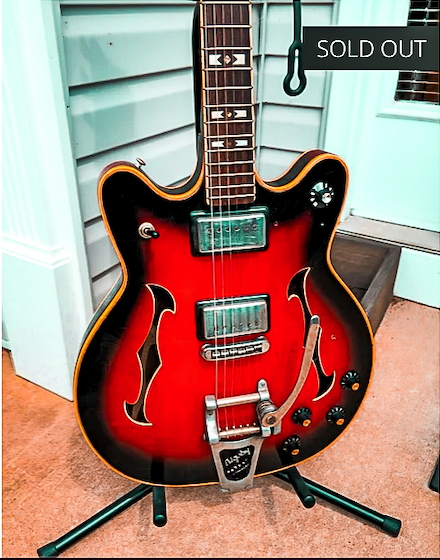National Bobbie Thomas Signature
National Bobbie Thomas Signature
THE BRAND KNOWN AS NATIONAL GUITARS has a long and storied history, from metalbodied resonator guitars in the 1930s to the hyper-cool map-shaped “Res-O-Glas” models of the 1960s. One of the nicest electric guitars they ever made, oddly enough, is also their least known— the obscure Bobbie Thomas artist model guitar of the late ’60s. Who was Bobbie Thomas, you might ask? In the 1960’s, Bob and Bobbie Thomas were a father and son act based in Chicago. They were regular performers on the National Barn Dance, Chicago’s answer to the Grand Ole Opry. In that same era, National guitars were being cranked out by Valco, a conglomerate guitar factory in Chicago that manufactured guitars under various brand names—Supro, Airline, Oahu, and National. The kid—Bobbie Thomas, Jr.—was hot stuff. It wasn’t long before the honchos at Valco, watching Bobbie Jr. ripping it up every week on local Chicago television, offered a rare opportunity: his own artist model guitar.
Viewing these guitars in hindsight with other Valco guitars of the era, one can tell that they were really trying to make a high-quality instrument with the Bobbie Thomas model. Though certain elements of the guitar, including the bolt-on neck and laminated plywood top and back, are indicative of budget instruments, the overall feel of the guitar is very nice. The hard maple neck, Grover Rotomatic tuners, Gibson ABR-1 adjustable bridge (which came stock) and the Bigsby vibrato all added up to a deluxe guitar that was several notches above the typical Valco.
The unique design of the Bobbie Thomas model was very original and holds up well today. The double-cutaway semi-acoustic construction hints at a Gretsch influence, and the batwing-shaped f-holes owe more than a passing nod to Rickenbacker’s stylized f-holes. You could order this guitar in three finishes—Cherry Shade, Sunset Orange, or the Natural Blonde shown here.
The Bobbie Thomas model cost a whopping $400 new in 1968, with a hardshell case for an extra 70 clams, making this guitar worth the equivalent of $3,000 in today’s money, which is probably why you don’t see too many of these. National also quit making their own instruments by 1970, turning to cheaper imported guitars to carry on the company name.









